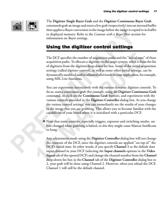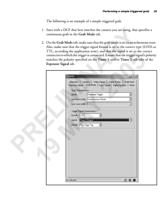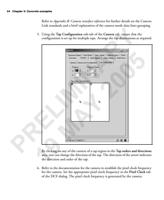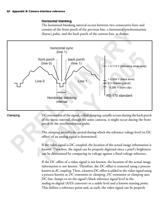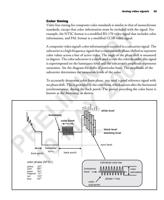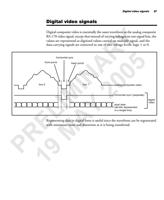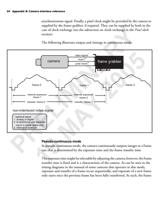
84 Appendix B: Camera interface reference
Clock exchange
As a general rule, if the camera has a pixel clock input, a pixel clock can be supplied
to it. Sometimes, the internal workings of a camera dictate that, from the pixel
clock sent by the frame grabber, the camera must generate and send back a strobe
Pixel jitter
RELIMMAINYA2R0Y05 Hsync
P 19 Pixel clock
of a different frequency that corresponds to the rate at which data is being read
out. This is called clock exchange.
Pixel jitter is the measure of accuracy of the pixel clock, measured in nanoseconds
by the variance in the rising edge of the pixel clock with respect to the falling edge
of the hsync. Pixel jitter is introduced by either the camera (in the pixel clock or
the hsync generated from the camera) or by the frame grabber’s PLL (which can
introduce additional pixel jitter). Incoming video data might be digitized late or
early, rendering inaccurate pixel representation, as a result of pixel jitter, as
illustrated below.
P+x nsec
P
P-x nsec
± X nsec*
If the pixel clock is accurate, the
video signal will be digitized at
exactly point P with a corresponding
grayscale intensity value. A pixel
jitter of ± nsec means that the
video might be digitized late or
early and be represented with
a higher or lower grayscale
intensity value.
P=Pixels

















